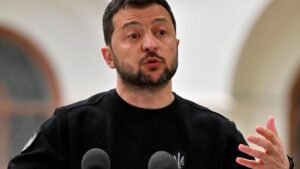EU gas prices on fire, fear of Russia invading Ukraine hot button

Wholesale gas prices in the EU rose to record levels in the third quarter of 2021, influenced by global gas markets, according to the EU Commission’s quarterly gas market report published on January 17.
But if Russia invades Ukraine, gas prices in Europe could surge further. “If there is an invasion all bets are off on gas prices,” Mike Fulwood, Senior Research Fellow at the Oxford Institute for Energy Studies (OIES), told New Europe on January 21, explaining that the balance is very tight now and any good or bad news moves prices a lot. “The extent of any move in prices may depend on what the sanctions are,” he said.
An invasion of Ukraine would trigger immediate fears of sanctions against Russia. According to Fulwood, not approving the controversial Nord Stream 2 natural gas pipeline from Russia to Germany that bypasses Ukraine is not likely to add much to prices in the short term. “It is unlikely to come on until mid year at earliest. It seems unlikely that sanctions would involve stopping imports of gas from Russia as that would cause widespread power cuts and soaring prices in Europe. The prices would more likely go higher on the bad news rather than any fundamental change to flows,” he said.
Asked when might gas prices fall back to pre-crisis levels, Fulwood said it wouldn’t take much to crash prices.
Russian gas monopoly Gazprom significantly reduced flows in the fourth quarter of last year via Yamal Europe and even further this month, he said. Despite that, prices have eased somewhat because of enormous quantities of liquified natural gas (LNG) coming to Europe. “If Gazprom increased flow along Yamal Europe to say top up its European storage capacity, then you could easily see prices coming off substantially. If and when Nord Stream 2 is approved and flowing then that could well normalise prices to some extent – not to 2019 or 2020 levels but much lower than at the moment,” the expert at the Oxford Institute for Energy Studies explained.
“We should be okay for gas storage this winter but will start summer at much lower level than last year – maybe 10 to 15 bcm (billion cubic meters) lower. That means a very high injection rate is required to get storage back to safer levels by October,” he said, adding that it all depends on Russia flows.
EU Commission’s quarterly gas market report published on January 17 showed that in the third quarter of 2021 Nord Stream remained the main supply route of Russian gas to Europe, as its share reached 40% of the total Russian pipeline gas imports in the EU, practically the same as a year earlier. The Ukraine transit route resurged to the second place, ensuring 27% of the total Russian pipeline gas transit, up from 25% year earlier. The share of the Belarus transit route fell back to the third place, representing 24% of the total Russian pipeline imports in the third quarter of 2021, down from 29% in the third quarter of 2020. The share of Turk Stream reached the highest since the start of this operation in early 2020, 9% in the third quarter of 2021, up from 5% in the third quarter of 2020 and from 7% in the previous quarter, second quarter of 2021.
According to the EU Commission’s quarterly gas market report in the third quarter of 2021 and in October-November as well, Gazprom booked less than expected additional interconnection capacities on infrastructure transiting gas through Ukraine and Belarus. The Commission pointed out that Russia managed to ship less gas to the European customers over this period, as until the beginning of November it was said to be a priority to fill up its domestic storages. Less than expected inflows from Russia made some speculations on exerting pressure on the EU to swiftly authorise the new Nord Stream 2 pipeline, however, it also put into question Russia’s long-enjoyed status of last resort supplier of gas to Europe, in case of supply limits owing to domestic reasons.
The report outlined how wholesale gas prices in Europe continued their sharp increase in the third quarter of the 2021, rising to €85/MWh by the end of September – a level rarely seen on European hubs. These high wholesale gas prices resulted in soaring wholesale electricity prices, and in turn significant increases in retail prices, the report read. The EU and Member States have taken various measures to mitigate the impact of gas price increases on households and businesses.
The Commission’s quarterly electricity market report highlighted that EU consumption in the third quarter of 2021 rose to those seen in the same period of 2019, i.e. pre-pandemic levels – driven by a steady economic recovery and an easing of lockdown restrictions. EU-wide consumption increased by 3% year-on-year in the second quarter of 2021, thanks to recovering industrial and labour activity.
However, the post-pandemic economic recovery has caused such a surge in global gas prices and significantly disrupted global supply chains, to drive record highs of electricity prices in European markets, the EU Commission said. The European Power Benchmark averaged 105 €/MWh in the third quarter of 2021 – equivalent to 211% higher than the third quarter of 2020 and 164% up on the same period in 2019. The rally of gas prices has reversed the coal-to gas switching registered in the last year, boosting coal generation gains in spite of increasing carbon prices during the third quarter of 2021.
follow on twitter @energyinsider
New Europe






